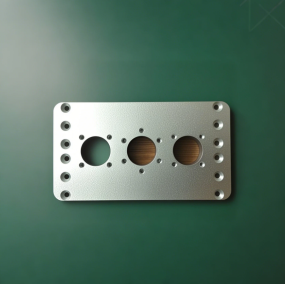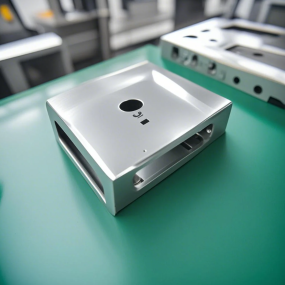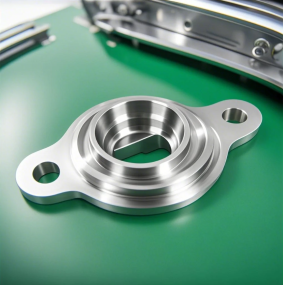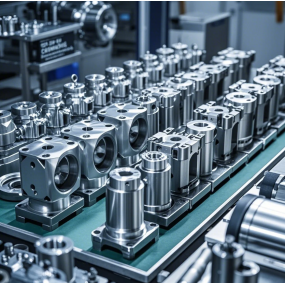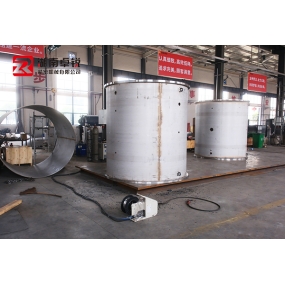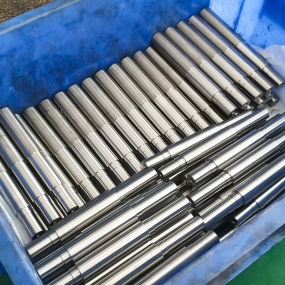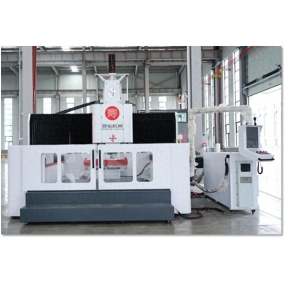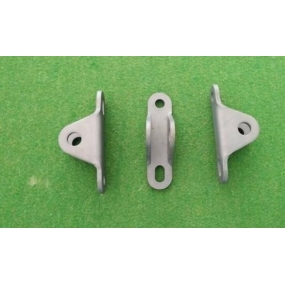Special steel parts have many special performance characteristics, which make them play an important role in various complex and high-end application scenarios: 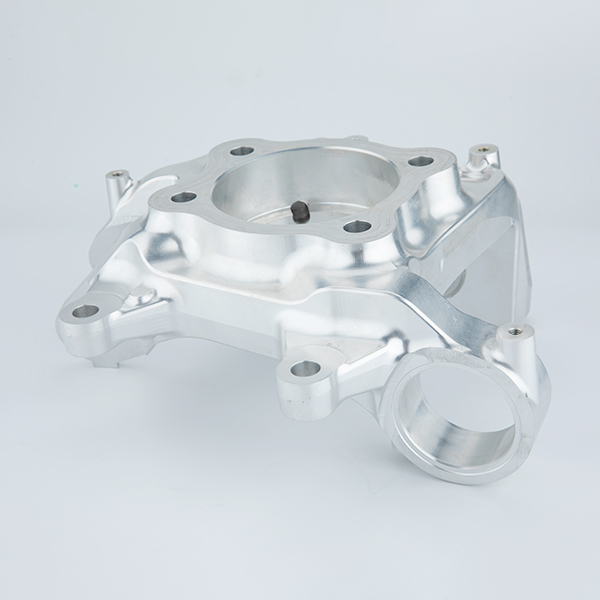 Mechanical properties High strength: Special steel parts usually have high strength, and their yield strength and tensile strength are much higher than ordinary steel. For example, mechanical parts made of high-strength alloy steel have a yield strength of more than 1000MPa and can withstand huge static and dynamic loads. This makes them widely used in structural parts that bear heavy loads, such as the boom of large cranes, key support components of bridges, etc. High hardness: Special steel can be significantly improved after special heat treatment or alloying treatment. Like high-speed steel tools, its hardness can reach HRC60-65, which can maintain a sharp cutting edge and is not easy to wear during high-speed cutting, effectively machining various hard materials. And this high hardness also gives the parts good wear resistance, which can maintain dimensional accuracy and surface quality for a long time in the friction environment. Good toughness: Many special steel parts also have good toughness while maintaining high strength and high hardness. For example, some alloy structural steel auto parts can absorb energy without brittle fracture when subjected to impact. This toughness is essential for parts that work in complex stress environments, such as car drive shafts, gears, etc., to prevent safety accidents caused by sudden fractures. Physical properties High temperature resistance: Some special steels have excellent high temperature resistance. For example, heat-resistant alloy steels can maintain high strength and oxidation resistance in high temperature environments (such as 600 - 1000 C). This makes them widely used in aerospace engine components, key parts of industrial furnaces and kilns, etc. In turbine blades of aero-engines, superalloys can withstand the initialization of high-temperature gas discharged from the combustion chamber, ensuring stable operation of the engine under high-temperature operating conditions. Low temperature resistance: Some special steels can still maintain good mechanical properties at extremely low temperatures. For example, low-temperature steels still have sufficient toughness at liquid nitrogen temperatures (-196 C), and will not appear cold brittleness. This characteristic is very critical for equipment that works in low temperature environments, such as tanks of liquefied natural gas (LNG) carriers, components of cryogenic refrigeration equipment, etc. Good Magnetism: Some special steels are magnetic materials, such as silicon steel sheets. Silicon steel sheets have the characteristics of high magnetic permeability and low iron loss, which can effectively concentrate and conduct magnetic fields. In electrical equipment such as motors and transformers, iron cores made of silicon steel sheets can reduce energy loss and improve the efficiency of equipment. Chemical Properties Corrosion Resistance: Special steel parts perform well in corrosive environments. For example, stainless steel parts contain alloying elements such as chromium and nickel, which can form a dense passivation film in various media such as atmosphere, water, acid, and alkali, preventing further erosion of corrosive media. In the fields of chemical equipment, food processing equipment, medical apparatus, etc., the corrosion resistance of stainless steel parts ensures the service life and safety of the equipment. Oxidation resistance: For some special steel parts that work in high temperature and oxidizing atmosphere, good oxidation resistance is essential. For example, superalloys can resist the erosion of oxygen at high temperature and prevent oxidative peeling on the surface of parts. This oxidation resistance guarantees the dimensional stability and performance reliability of parts in high temperature environments. Processing performance Weldability: Although special steel is relatively difficult to weld due to its complex alloy composition, good welding can still be achieved through suitable welding processes and welding materials. For example, some high-strength alloy steels can obtain high-quality welded joints after using preheating, post-heating and other process measures, and selecting matching welding materials to meet the manufacturing requirements of complex structural parts. Machinability: The machinability of special steels varies from material to material. Some special steels are difficult to cut due to their high hardness and toughness. However, by selecting appropriate tool materials, tool geometry parameters and cutting parameters, such as the use of carbide tools, reasonable cutting speed and feed, efficient cutting can also be achieved. For example, for titanium alloy parts, high-speed cutting and appropriate cooling and lubrication methods can achieve better machined surface quality.
Mechanical properties High strength: Special steel parts usually have high strength, and their yield strength and tensile strength are much higher than ordinary steel. For example, mechanical parts made of high-strength alloy steel have a yield strength of more than 1000MPa and can withstand huge static and dynamic loads. This makes them widely used in structural parts that bear heavy loads, such as the boom of large cranes, key support components of bridges, etc. High hardness: Special steel can be significantly improved after special heat treatment or alloying treatment. Like high-speed steel tools, its hardness can reach HRC60-65, which can maintain a sharp cutting edge and is not easy to wear during high-speed cutting, effectively machining various hard materials. And this high hardness also gives the parts good wear resistance, which can maintain dimensional accuracy and surface quality for a long time in the friction environment. Good toughness: Many special steel parts also have good toughness while maintaining high strength and high hardness. For example, some alloy structural steel auto parts can absorb energy without brittle fracture when subjected to impact. This toughness is essential for parts that work in complex stress environments, such as car drive shafts, gears, etc., to prevent safety accidents caused by sudden fractures. Physical properties High temperature resistance: Some special steels have excellent high temperature resistance. For example, heat-resistant alloy steels can maintain high strength and oxidation resistance in high temperature environments (such as 600 - 1000 C). This makes them widely used in aerospace engine components, key parts of industrial furnaces and kilns, etc. In turbine blades of aero-engines, superalloys can withstand the initialization of high-temperature gas discharged from the combustion chamber, ensuring stable operation of the engine under high-temperature operating conditions. Low temperature resistance: Some special steels can still maintain good mechanical properties at extremely low temperatures. For example, low-temperature steels still have sufficient toughness at liquid nitrogen temperatures (-196 C), and will not appear cold brittleness. This characteristic is very critical for equipment that works in low temperature environments, such as tanks of liquefied natural gas (LNG) carriers, components of cryogenic refrigeration equipment, etc. Good Magnetism: Some special steels are magnetic materials, such as silicon steel sheets. Silicon steel sheets have the characteristics of high magnetic permeability and low iron loss, which can effectively concentrate and conduct magnetic fields. In electrical equipment such as motors and transformers, iron cores made of silicon steel sheets can reduce energy loss and improve the efficiency of equipment. Chemical Properties Corrosion Resistance: Special steel parts perform well in corrosive environments. For example, stainless steel parts contain alloying elements such as chromium and nickel, which can form a dense passivation film in various media such as atmosphere, water, acid, and alkali, preventing further erosion of corrosive media. In the fields of chemical equipment, food processing equipment, medical apparatus, etc., the corrosion resistance of stainless steel parts ensures the service life and safety of the equipment. Oxidation resistance: For some special steel parts that work in high temperature and oxidizing atmosphere, good oxidation resistance is essential. For example, superalloys can resist the erosion of oxygen at high temperature and prevent oxidative peeling on the surface of parts. This oxidation resistance guarantees the dimensional stability and performance reliability of parts in high temperature environments. Processing performance Weldability: Although special steel is relatively difficult to weld due to its complex alloy composition, good welding can still be achieved through suitable welding processes and welding materials. For example, some high-strength alloy steels can obtain high-quality welded joints after using preheating, post-heating and other process measures, and selecting matching welding materials to meet the manufacturing requirements of complex structural parts. Machinability: The machinability of special steels varies from material to material. Some special steels are difficult to cut due to their high hardness and toughness. However, by selecting appropriate tool materials, tool geometry parameters and cutting parameters, such as the use of carbide tools, reasonable cutting speed and feed, efficient cutting can also be achieved. For example, for titanium alloy parts, high-speed cutting and appropriate cooling and lubrication methods can achieve better machined surface quality.
Hello! Welcome to EMAR's website!
 English
English » »
» »
 Spanish
Spanish Arabic
Arabic French
French Portuguese
Portuguese Belarusian
Belarusian Japanese
Japanese Russian
Russian Malay
Malay Icelandic
Icelandic Bulgarian
Bulgarian Azerbaijani
Azerbaijani Estonian
Estonian Irish
Irish Polish
Polish Persian
Persian Boolean
Boolean Danish
Danish German
German Filipino
Filipino Finnish
Finnish Korean
Korean Dutch
Dutch Galician
Galician Catalan
Catalan Czech
Czech Croatian
Croatian Latin
Latin Latvian
Latvian Romanian
Romanian Maltese
Maltese Macedonian
Macedonian Norwegian
Norwegian Swedish
Swedish Serbian
Serbian Slovak
Slovak Slovenian
Slovenian Swahili
Swahili Thai
Thai Turkish
Turkish Welsh
Welsh Urdu
Urdu Ukrainian
Ukrainian Greek
Greek Hungarian
Hungarian Italian
Italian Yiddish
Yiddish Indonesian
Indonesian Vietnamese
Vietnamese Haitian Creole
Haitian Creole Spanish Basque
Spanish Basque


